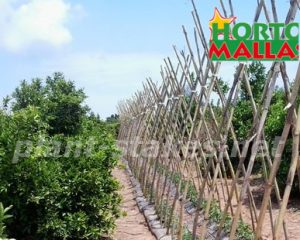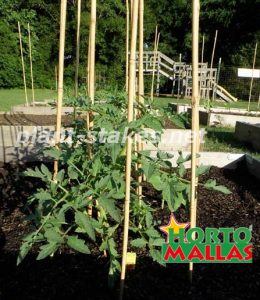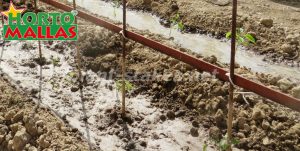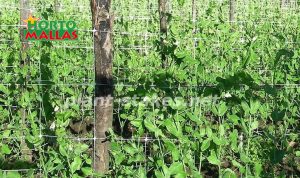
There are a number of plants such as stragglers which are not able to remain upright without some external support. That is why most of them keep crawling and rise up work when they find some support in the way which may be a tree, ladder, ropes, wires, gates, etc. there are a number of support types which can be used to stake plants which include, metallic options, polymeric nets, traditional ways, or by simply using some structure or naturally present things and objects. The best time of plant staking is the early months or days of the plantation. This is because if they aren’t staked before these are grown too much they need to be dragged as they will be collapsed and hard to handle then. This approach of vertical gardening is very creative for arranging flowers, plants and shrubs in a garden. It along with giving an outstanding look to an area also provide an organized and planned dimension to a garden increasing net capacity and yield. Two approaches bottom-up and top-down support conditions are generally used for plant staking including flowers, vegetables or other crawling species of plant being grown. It requires extensive involvement of plant-stakes for vertical gardening. A number of plants can be supported by using trellises. Other materials used for the same purpose are bamboo, wires, fencing, scaffolds, arbors, garden netting, arches, pergolas, hanging baskets, tiered containers, plastic pouches, inverted planters, and maypoles. But the preferred plant-stakes by majority of users and farmers are those of metal due to their more lifespan and durability.
The major advantage of using plant stakes is the minimal use of the space in the field or garden. So by this approach the growth will be more and hence will be the yield. This also makes the garden or structure more attractive and easily accessible for watering and maintenance.

Plants like tomato are benefitted by the supports like stakes, cages, myriad, etc. The use of tomato stakes helps in avoiding diseases, keeping the tomatoes clean, easy to harvest and easy maintenance like spray and monitor issues. Tomato stakes are simple supports requiring a stake to drive into the ground with each plant and hence provide the way to climb from very beginning. The height of the stakes should be 6-8 feet. The options about the material are plastic, wooden or bamboo tomato stakes and there is an option to just use some object or structure for the same like pipe, gate, etc. The stakes should be installed as soon as the plants are sown as if delayed the roots of the plants may receive some damage. The main stem of the tomato plant should be tied to the stake but loosely using ties which are themselves soft to avoid any cuts and other pressure injuries. The strips of almost 8 inches are considered good. There should be some minimum distance maintained between the stakes and this can be around 2-4feet which depends upon the size and variety of the tomato plant being planted. Moreover, to take out these stakes at the end of season or harvesting is also an easy task.

Staking of pepper plants is also considered to be an effective agricultural solution for better results. Though many of these pepper plants are strong and can stand on their own but they also need some support at some point of growth and this time is generally near the end of the harvesting season. Moreover, in some areas there are long growing seasons and hence these pepper plants grow even taller and hence requiring the support for standing vertical. Also the use of vertical support to pepper plants is due to the hail storms as these result in heave damage to the supporting parts of the plant. Other pepper plants which require staking are the hybrid ones which grow large amounts of pepper and hence increase the load on the stem.
Pepper stakes used can be of height of 2-3 feet and the material is generally bamboo, wooden or other material suitable for garden stake. These stakes should be drown at least 6 inches under the soil. They should be alongside the plant and the suitable time to set these is the time of planting the pepper plant so as to avoid rood disturbances. However, if there is no requirement of pepper staking in the beginning it can also be done during the later time in the season as per the requirement. The ties are similar to those used in case of tomato stacking of soft or old nylon or soft twine. Small wire cage can also be used to support these pepper plants. The importance should be given to that time when the fruit grow on the branches as the weak stem tend to move towards the ground and increasing the threat of various diseases. So efforts should be made to avoid the plant fruits to touch the ground during that period.

There are various other ways for supporting the tomato and pepper plants which can prove to be effective and moreover, this depends upon the conditions on the ground to select the best option for the requirement.
